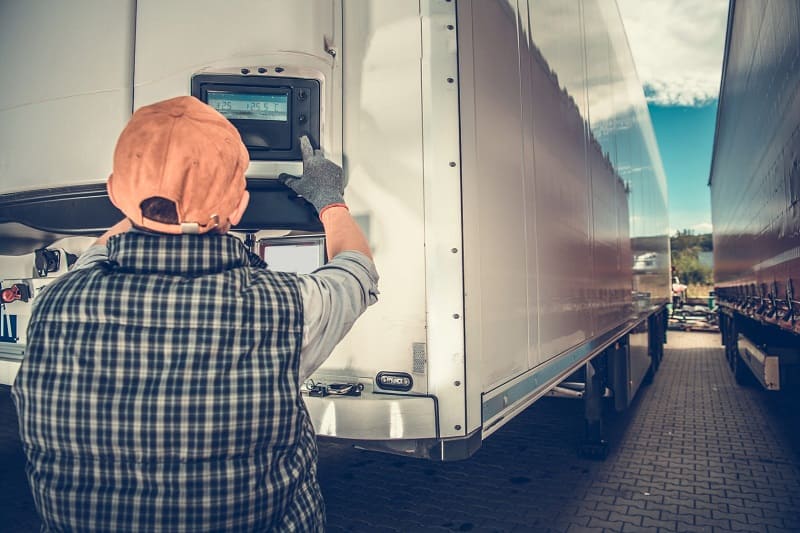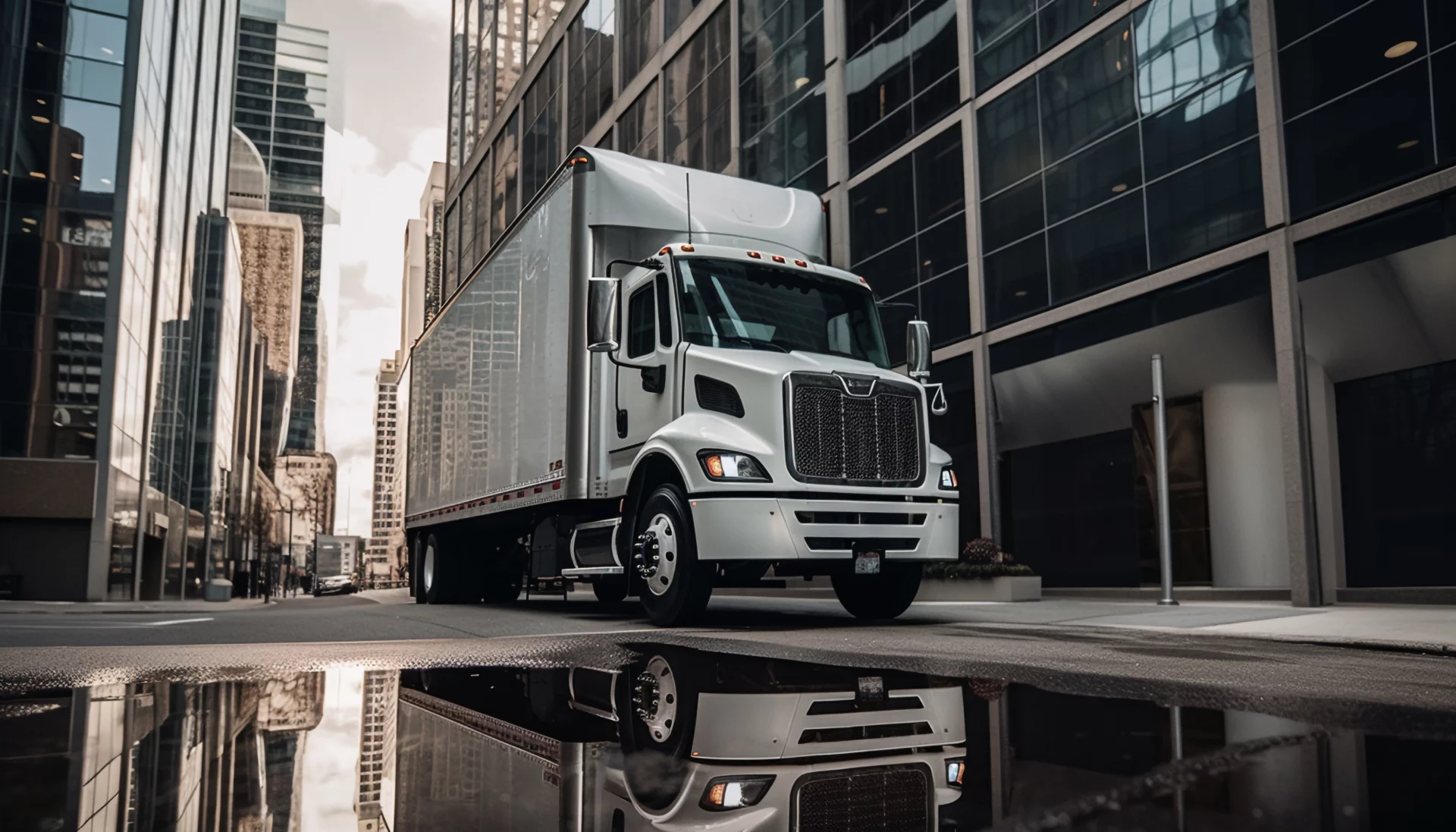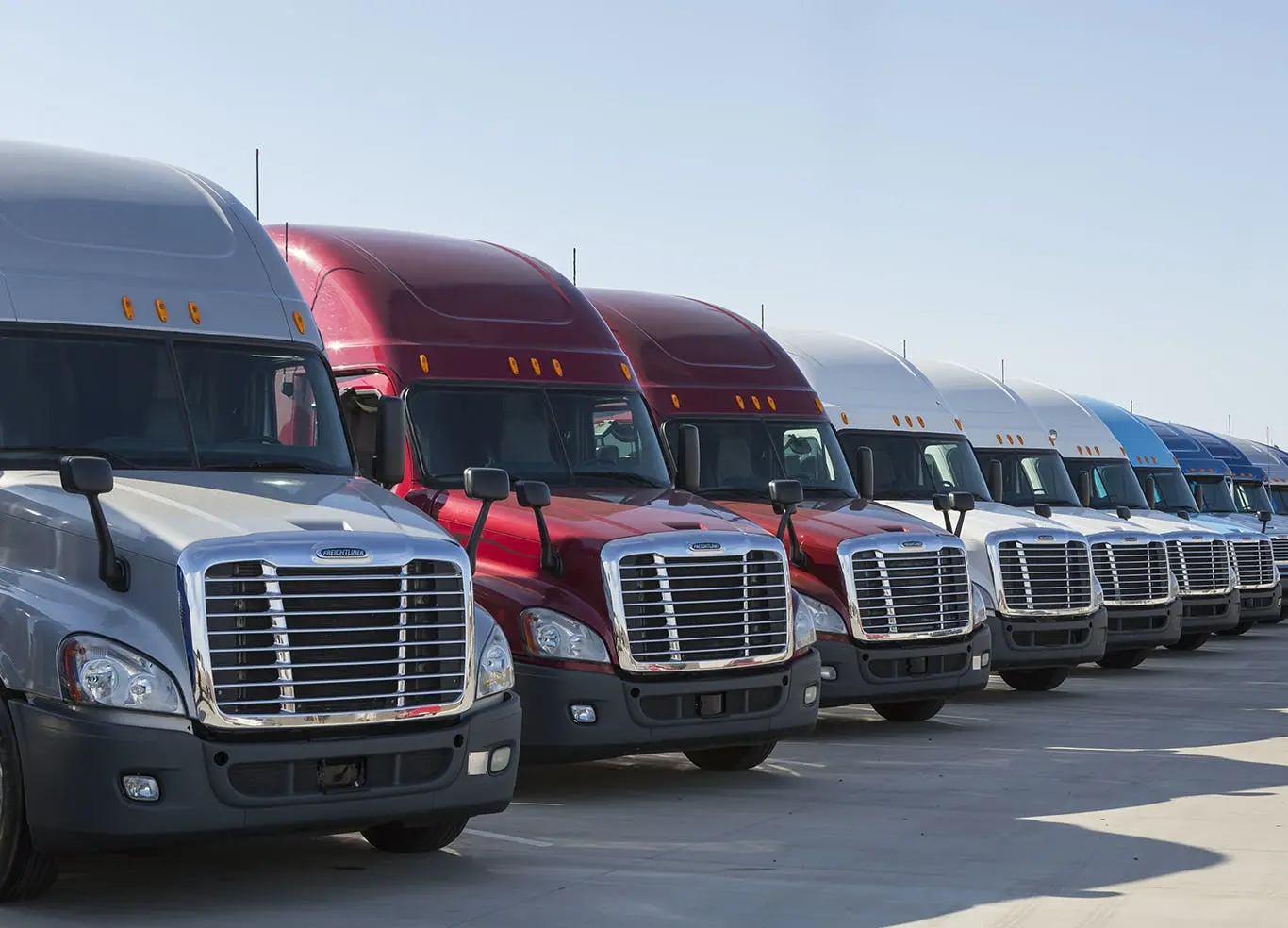

Reefer Temperature Range
How to Set the Perfect Reefer Temperature
A large portion of the trucking business involves hauling perishable cargo. That means having the perfect reefer container temperature range is essential to getting your load to its destination safely. If you’re new to truck driving or moving refrigerated cargo, read on to learn all about setting the right reefer temperature for different types of cargo, as well as best practices when working with perishable loads.
- How to Set the Perfect Reefer Temperature
-
Reefer Container Cool Transport Basics
- Cargo Standards
-
Diesel-Powered Refrigeration
- How Cold Can a Reefer Trailer Get?
-
Reefer Container Temperature Range
- How to Set Temperature on Reefer Container for Different Items
- Meat, Poultry, Fish, and Dairy
- Produce
- Plants and Florals
- Pharmaceuticals
-
How to Set Temperature on Reefer Trailer: Pro Tips
- Know Your Responsibility
- Load Cargo Properly
- Be Aware of Time Constraints
- Understand Geographic Transport Needs

Reefer Container Cool Transport Basics
Cargo Standards
Because having the proper level of coolness affects the safety of cargo like food and pharmaceuticals, standards were created for various types of items. Customers may request specific temperatures for their goods while in transit. Government agencies such as the Food and Drug Administration (FDA) also have their own rules that determine safe transport temperatures. Without these standards, cargo could spoil, resulting in illness for consumers and lost revenue for wholesalers and retailers.
Diesel-Powered Refrigeration
Refrigerated containers were developed to ensure the safe transport of food, plants, and medications that require cooler conditions. Known in the industry as “reefers” (a derivation of refrigerator), these trailers position diesel-powered refrigeration units at the front to maintain the right amount of coldness. Reefer refrigeration units are quite robust, as when trapped heat builds up inside a non-refrigerated trailer, the reefer truck temperature range can be 30 degrees Fahrenheit or more above the outside air temperature.
Reefers have revolutionized the food industry. At the start of the 20th century, people had to eat what was available locally, depending on the season. Nowadays, fresh produce from warm climates can be shipped across the country and the globe, allowing people to eat fresh produce all year long, even if it normally wouldn’t be in season in their locale.
How Cold Can a Reefer Trailer Get?
While reefers are designed to keep the material inside cool or cold, they don’t cool cargo initially. Therefore, heat-sensitive cargo is loaded at the proper temp from the start, and the reefer keeps that steady throughout its journey. Some reefer trailers can accommodate zones with different temperatures in each so drivers can haul multiple types of goods in one load.
The average reefer maintains temperatures within a range of about -13 degrees to 77 degrees Fahrenheit. However, there are highly specialized refrigeration units that go as low as -85 degrees Fahrenheit. These reefers are typically used for the transport of items in the medical and chemical industries.
Reefer Container Temperature Range
How to Set Temperature on Reefer Container for Different Items
Many reefers have backup refrigeration units, as the failure of only one unit could result in catastrophic spoilage. Insulation and specially structured flooring also help maintain the proper conditions. Creating the right airflow, or preventing airflow in the case of some fruits and vegetables, is essential to protecting cargo as well.
Every reefer is slightly different, depending on the refrigeration manufacturer, when it comes to the specific steps in setting the temperature. Most have cab dashboard-mounted controls with touchscreen or push-button technology for raising or lowering the temperature as needed for different cargo categories (see below). They also have a display that shows the driver the temperature inside the trailer at all times.
| Type of Cargo | Meat, Poultry, Fish, and Dairy | Greens, fruits, vegetables | Cranberries and avocados | Green beans, potatoes, and sweet potatoes | Bananas, tomatoes, cucumbers, watermelon, and some citrus fruits | Plants and Florals | Pharmaceuticals |
|---|---|---|---|---|---|---|---|
| Temperature Range | 0 ℉ | 32-36 ℉ | 38-40 ℉ | 40-45 ℉ | 45-50 ℉ | 33 ℉ | 68-77 ℉ |
Meat, Poultry, Fish, and Dairy
The growth of bacteria is usually the greatest worry when transporting meat, poultry, fish, and dairy. An overgrowth of bacteria can make the cargo unsalable or cause food poisoning in consumers. This is why many meat and dairy products are shipped in a frozen state, to be thawed once they reach their destination. Freezing stops the replication of any tiny amounts of bacteria already present. As a rule of thumb, meat, poultry, fish, and dairy items are always transported at 40 degrees Fahrenheit or cooler for safety.
Produce
There are two concerns for truckers shipping produce. First, like with other foodstuffs, it must remain safe to eat. While produce doesn’t spoil as quickly as meat or dairy, it is possible to go off and make a consumer sick. Second, produce must look presentable to buyers too. Therefore, it must be loaded and stacked carefully and not jostled too much in transit. Maintaining the proper temperature prevents it from ripening too quickly and becoming unappealing, like black bananas. Produce that ripens too fast can also release harmful heat and gases, so this is to be avoided at all costs. In some cases, just a few degrees’ difference in the reefer can spell the difference between perfect produce and a load that’s ruined for the consumer.
Fruits and vegetables are transported within different reefer trailer temperature ranges, depending on what they are. As you probably know from keeping fruits and vegetables at home, some produce does better closer to room temperature, while other produce needs much more chilling. The client may have special requirements, too, based on variety, season, and desired degree of ripeness for how long the items are expected to sit on the shelf. You can use this guide when transporting produce:
- 32-36 degrees Fahrenheit: greens (lettuce, spinach), apples, grapes, stone fruits (apricots, cherries, plums, etc.), cruciferous vegetables (broccoli, cabbage, cauliflower, etc.)
- 38-40 degrees Fahrenheit: cranberries and avocados
- 40-45 degrees Fahrenheit: green beans, potatoes, and sweet potatoes
- 45-50 degrees Fahrenheit: bananas, tomatoes, cucumbers, watermelon, and some citrus fruits
Plants and Florals
Like produce, plants and florals may have different reefer temperature ranges depending on their type. Generally speaking, about 33 degrees Fahrenheit is the standard for hauling plants and florals. Failure to maintain the proper temperature, especially if it dips below freezing, can result in wilting, browning, leaf or petal drop, or plant death.
Plants and florals are also particularly sensitive to changes in humidity. Many reefers are outfitted with humidity controls to prevent moisture loss. This is especially vital when transporting cut flowers, such as those sold by florists and grocery stores.
Pharmaceuticals
Depending on the product, a trailer of pharmaceuticals could be worth a million dollars or even more. The FDA is very strict about temperature controls for the storage and transport of pharmaceuticals. If the transport container becomes too hot or too cold, it could reduce or eliminate the efficacy of medications. The delivery of some pharmaceuticals may also be affected, caused by separation or sedimentation occurring at too hot or too cold temperatures. Whenever accepting a shipment of pharmaceuticals, it’s best to double-check the temperature requirements and complete your transport as efficiently as possible to reduce the risk of costly spoilage.
The chemical compounds used in pharmaceuticals, as well as regulatory guidelines, determine shipping temperatures for various classes of drugs and medical products. There are three general types of pharmaceuticals. Use these categories when determining reefer temperatures for transport:
- Room temperature: 20-25 degrees Celsius or 68-77 degrees Fahrenheit.
- Refrigerated: 2-8 degrees Celsius or 35.6-46.4 degrees Fahrenheit.
- Cryogenic: 0 degrees Celsius and colder or 32 degrees Fahrenheit and colder.
How to Set Temperature on Reefer Trailer: Pro Tips
Know Your Responsibility
You are responsible for refrigerated cargo placed in your care for transport. You should know when precisely the cargo becomes your responsibility (during or after loading and unloading, for example). If you’re not clear about temperature specifications, inquire before departing so you don’t make the mistake of arriving with spoiled items. Make sure your cargo is pre-cooled before loading. Always know how your refrigeration controls work and how to operate any backup refrigeration units. Inspect your refrigeration equipment frequently and repair small problems immediately before they become more expensive ones.
Load Cargo Properly
As mentioned above, loading your cargo correctly can go a long way in ensuring its safety and the maintenance of proper temperature. The weight should be distributed evenly, and it may need to be bound in places to prevent movement. Never stack cargo too high for your trailer’s specifications. Stack cargo for optimal airflow, whether it needs spacing or no space between cartons.
Be Aware of Time Constraints
There are many time restrictions around the transport of pharmaceuticals, food, and plants. Retailers or other end users are waiting for these items, and many of these have a very short shelf life, like fruit and cut flowers. Plan your route carefully to reach your destination on time without compromising driving safety. If you run into delays due to traffic, road construction, weather, or mechanical problems, inform all relevant parties immediately.
Understand Geographic Transport Needs
If you are an owner-operator, you will likely find that drivers with reefers are very much in demand right now. There are excellent opportunities to provide transport throughout the country for different types of refrigerated items. If you plan to drive loads any distance, you will notice that there are different reefer transportation needs based on geography. So, you can maximize your profitability by planning to pick up meat in Chicago, for example, after dropping off a load of produce from California. Want to maximize your revenue even more? Contact Logity Dispatch for more information. We provide dispatch services for owner-operators and truck fleets. All you have to do is drive and deliver. We do the rest for you. Reach out today at 302-425-9299, or use our easy contact form to get in touch.







